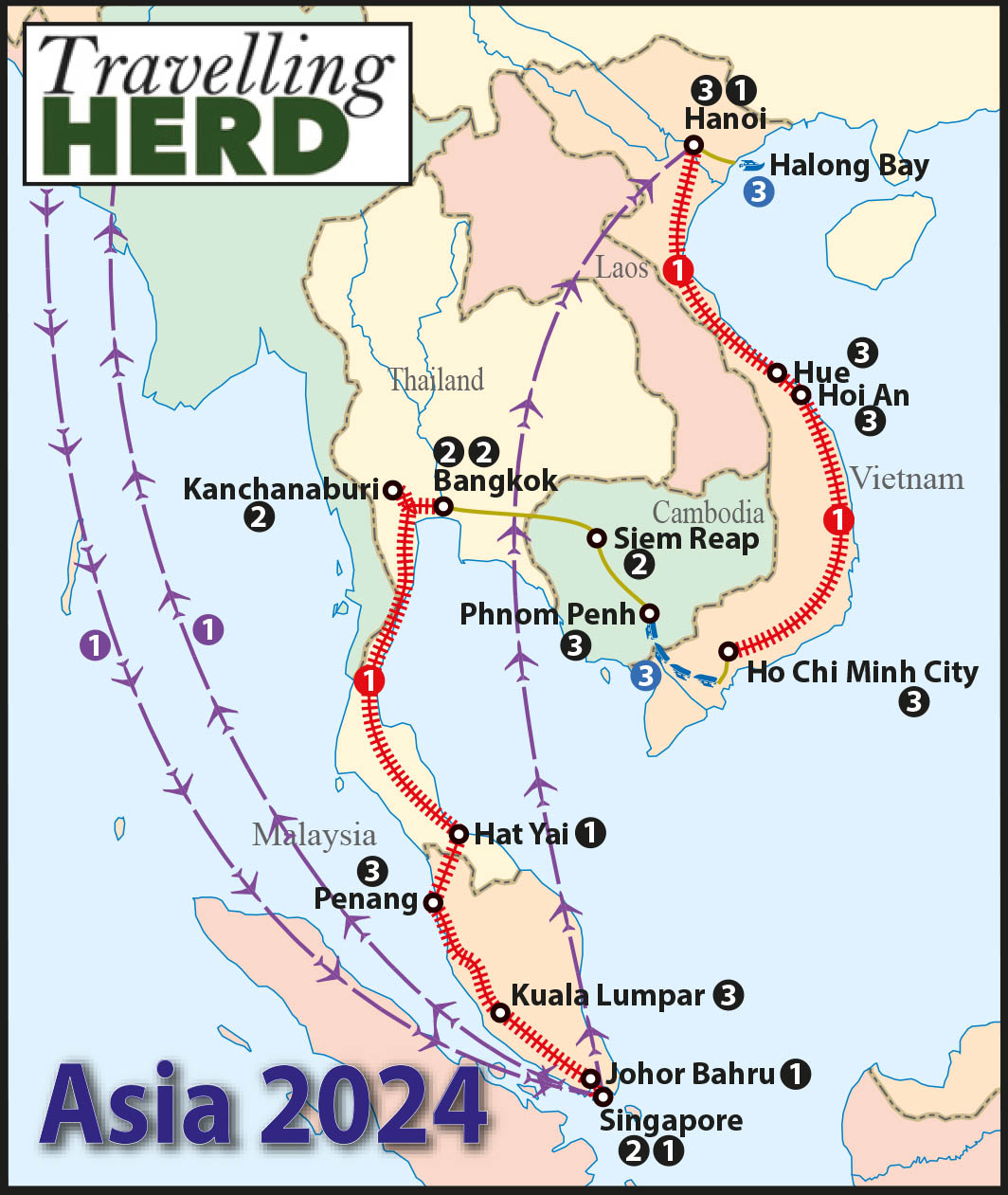Read this blog: The one where we reach our fifth country in South East Asia
Saturday 6th to Monday 8th April 2024
We had one more full morning in Bangkok and as it was a Saturday we went to look at the Weekend Market, also known as Chatuchak Market.
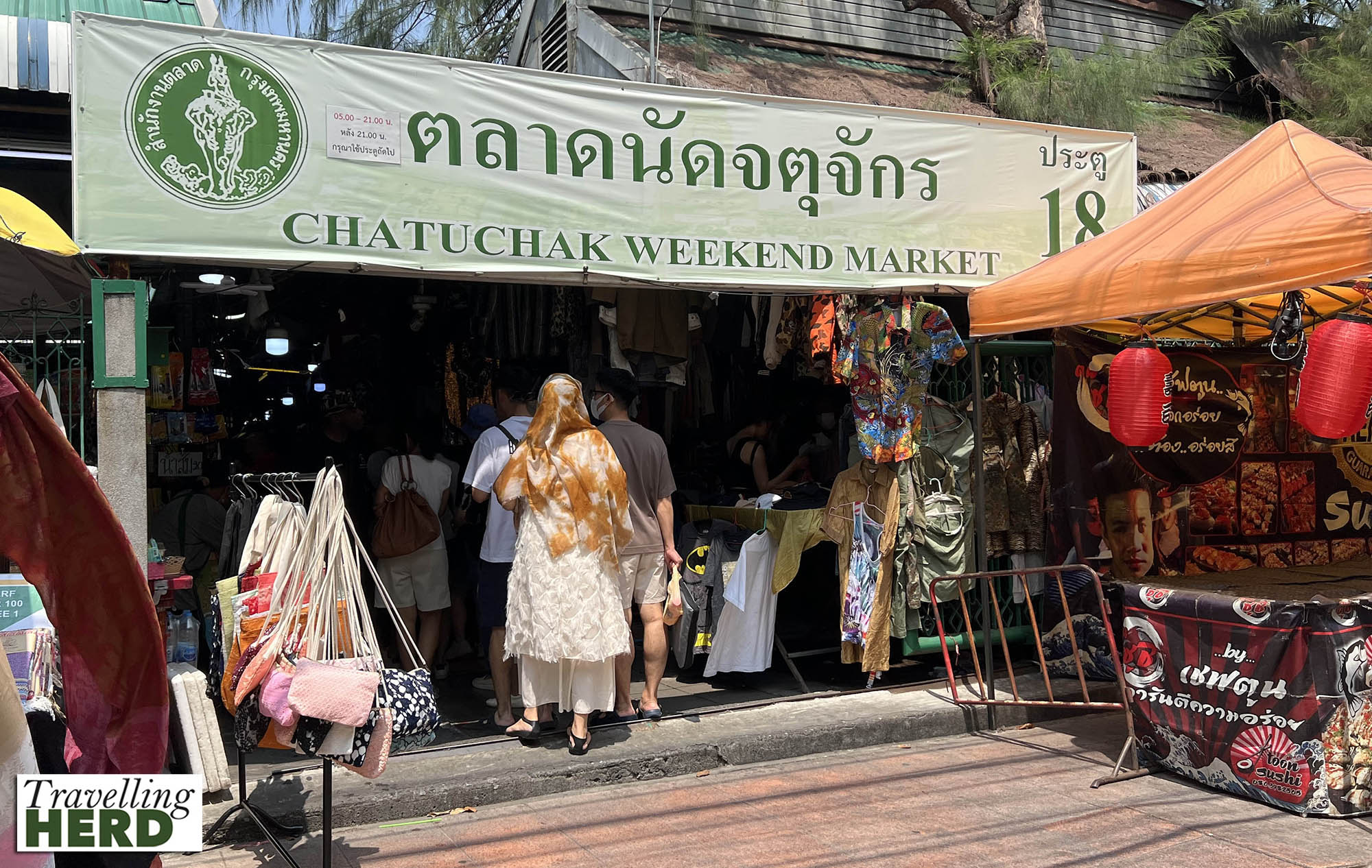
This is a vast retail space with over 8,000 market stalls spread over more than 14 hectares. You can buy almost anything here. There were plenty of shops selling vintage pre-owned clothing and Robert bought several more Hawaiian shirts [one actually made in Hawaii] to add to his collection. With temperatures well into the thirties, and the sweat free flowing, he did not want to try them on. [Once we got these purchases back to our room, Matilda felt that at least one of them was rather snug for Robert and so it might become a hand-me-down to her.]
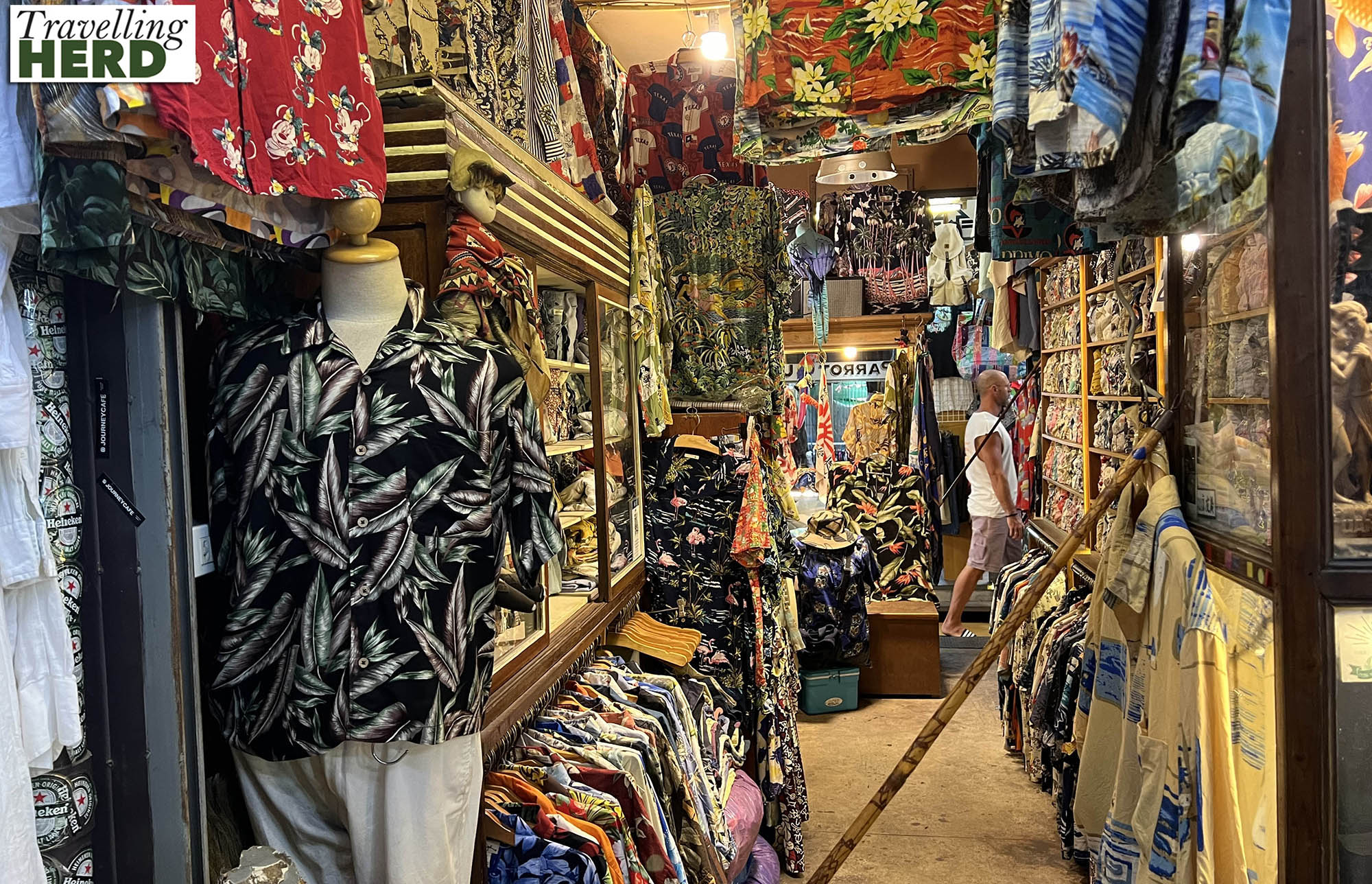
From here we went to Chinatown which is one of the largest in the world. It is also home to the oldest Chinese shrine in Thailand which dates from 1658.
Chinatown was founded in 1782 when Bangkok became the capital of the Rattanakosin Kingdom. The immigrant Chinese who settled here were mostly Teochew from south China and they soon became the largest ethnic group in the city.
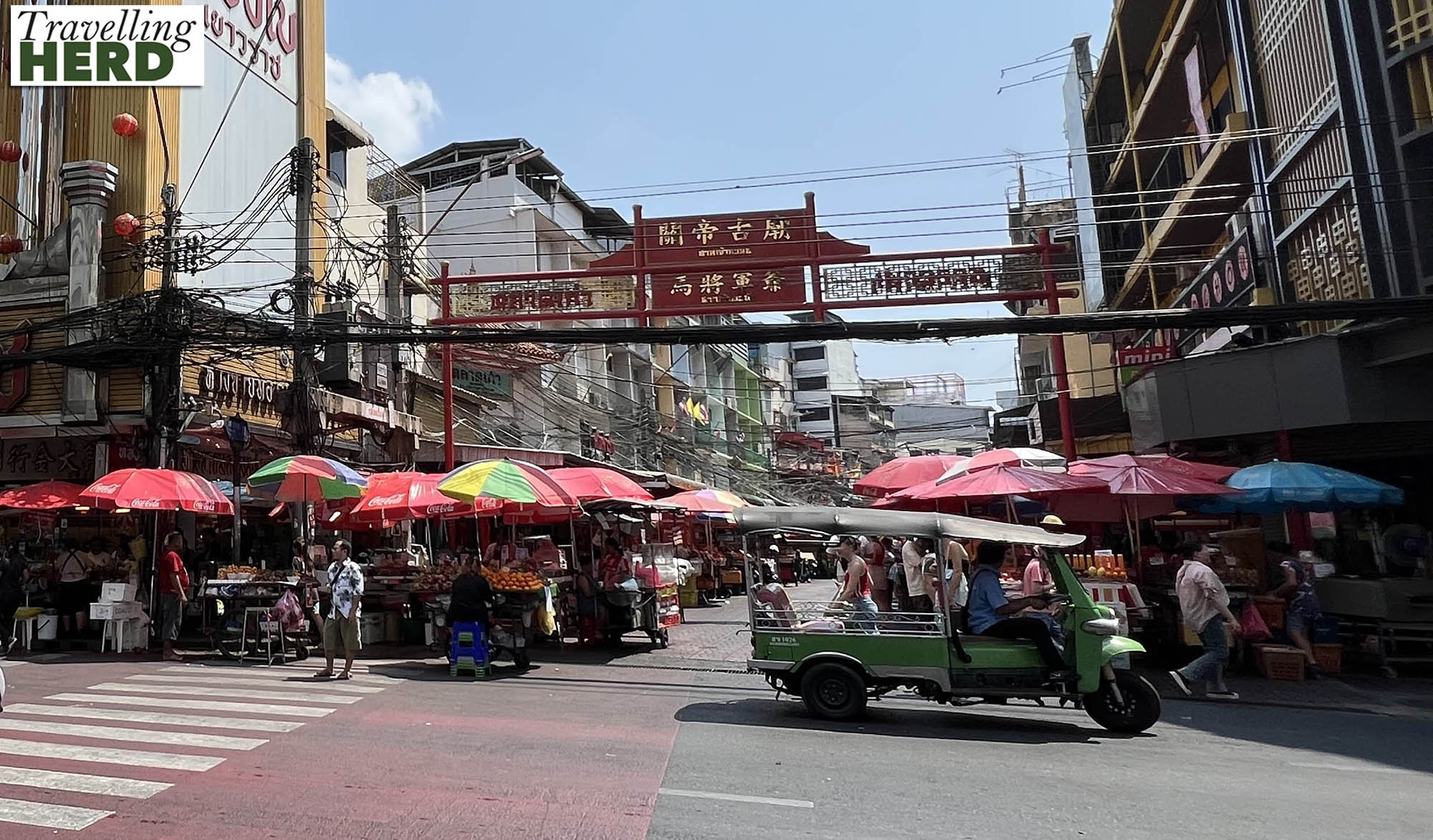
Chinatown does feel more like a city than a town. Because of the high number of ethnic Chinese in Bangkok, Chinese products are readily available across the metropolis so this did not seem to us to be the sort of specialist and unique area which Chinatown can be in some of the places we have visited. The sights and smells are nevertheless strongly evocative.
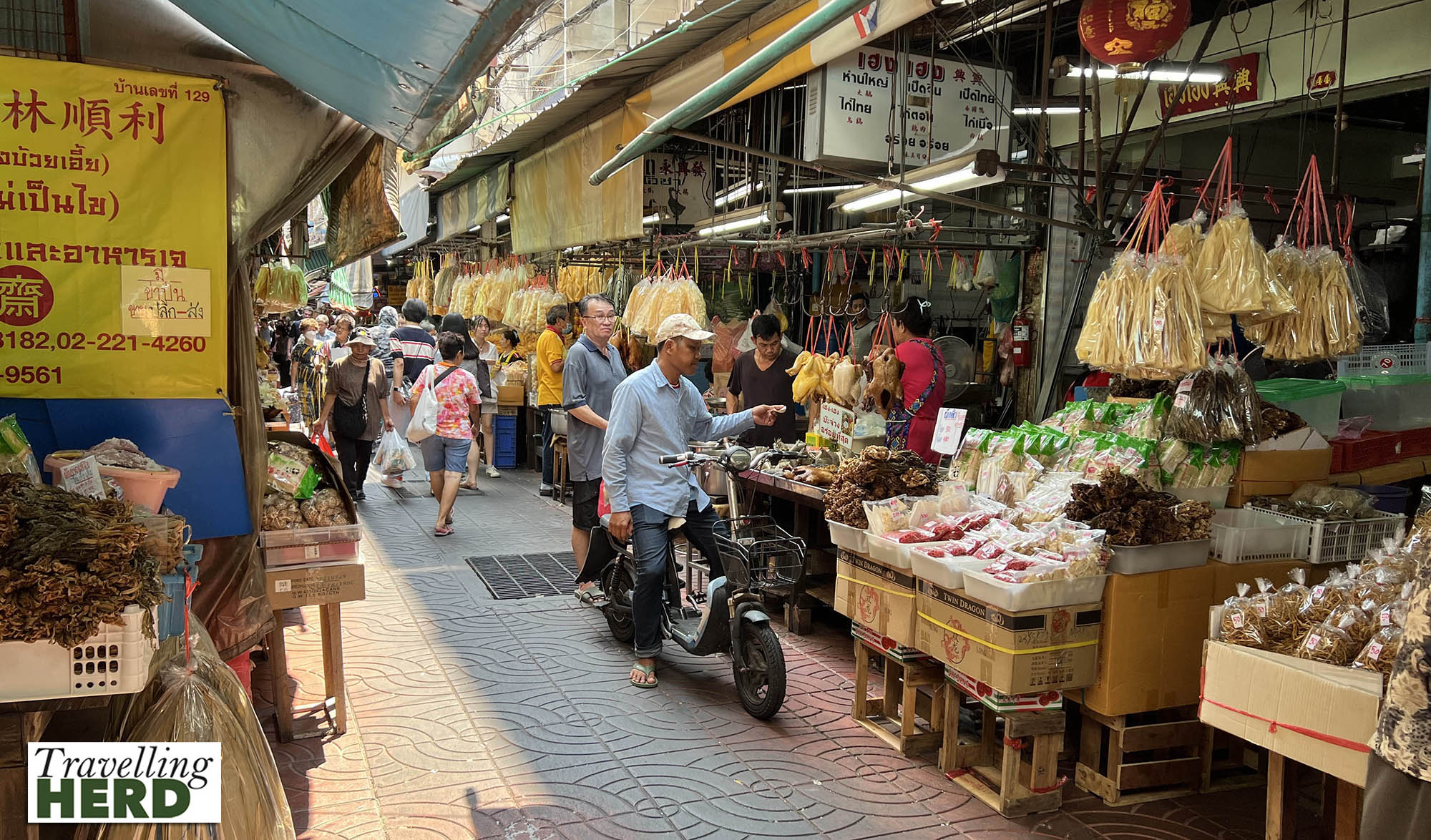
Perhaps because we have met several British gentleman of a certain age who have opted to live in Thailand to make their pensions go further we had developed a rather stereotypical and maybe unjustified view of tourism here.
So, succumbing to his curiosity Robert wanted to visit Soi Cowboy [Cowboy Street] ostensibly to rehydrate.

By night this is a well-known red light district. When we visited, in search of a cold drink in the early afternoon, there were mobile stalls selling snacks and ice chips with added syrup flavourings. These would be gone by the evening.
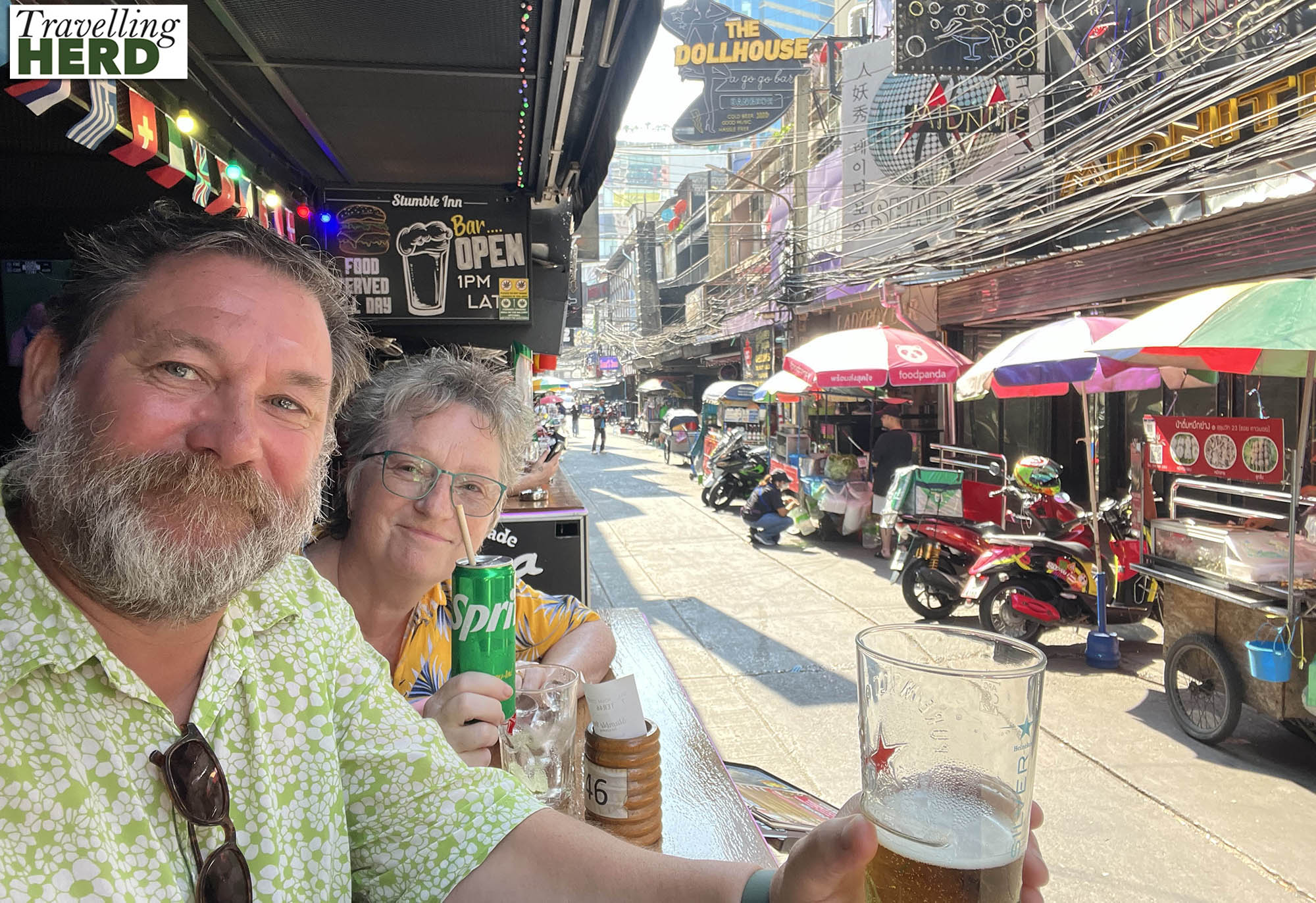
Soi Cowboy is only 400 meters long but has more than 40 bars which leaves very little space for anything else. Robert could not resist.
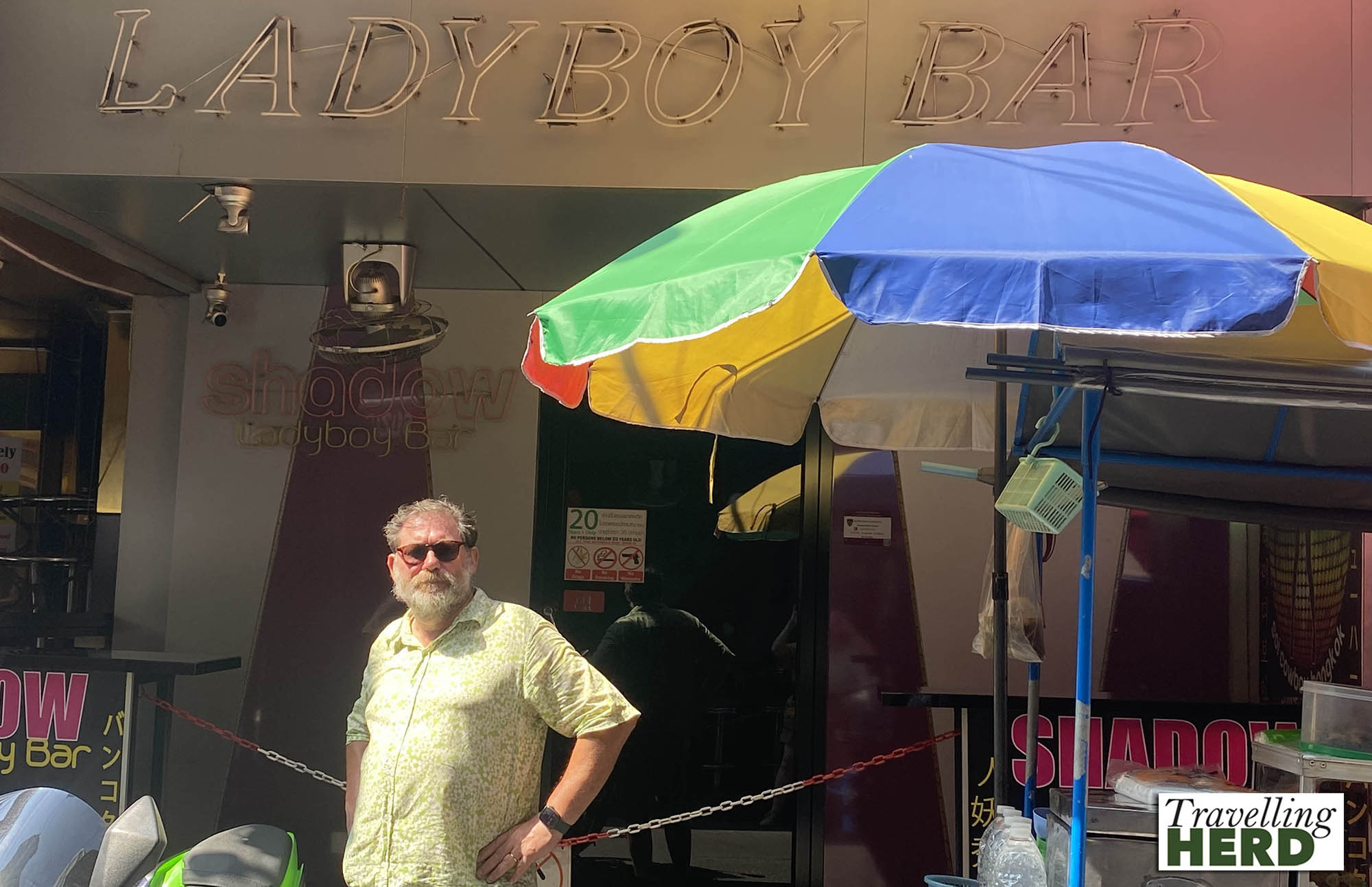
We are regularly amazed by the volume of ‘stuff’ which can be transported by people trying to make a sale. The brush man below really excelled.
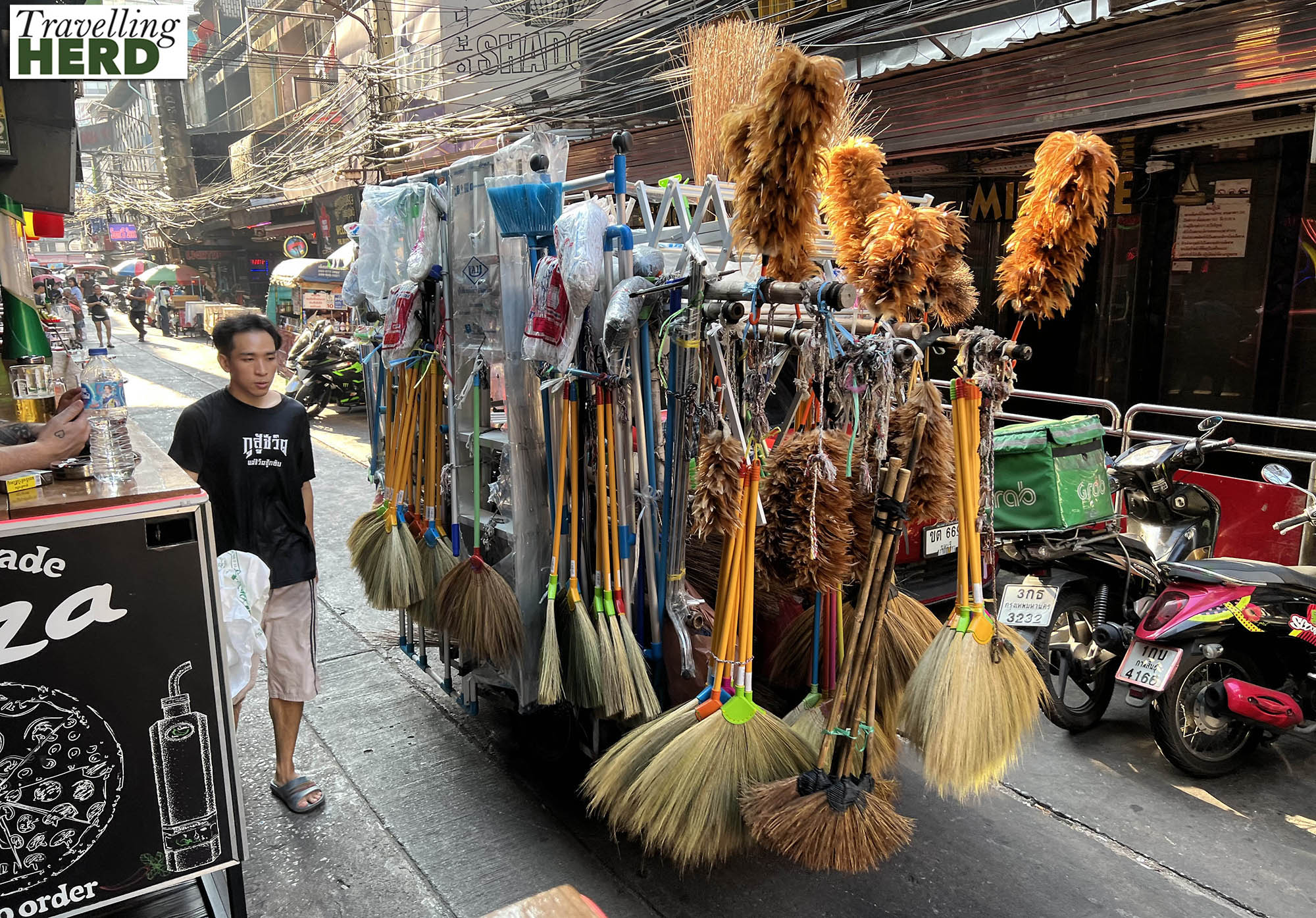
Having replaced some lost fluids, it was time to leave Thailand and move to the next country. We collected our luggage from the hotel ready to catch the sleeper train to Hat Yai.
The sleeper carriage was Chinese built and had a section at one end [which was also the back of the train] with several toilet options, including separate urinals, as well as a shower. Matilda was impressed to find toilet paper was also provided and that these facilities were only for the use of sleeper passengers. There was also a good view out of the back of the train [see feature photo and the Video of the day].
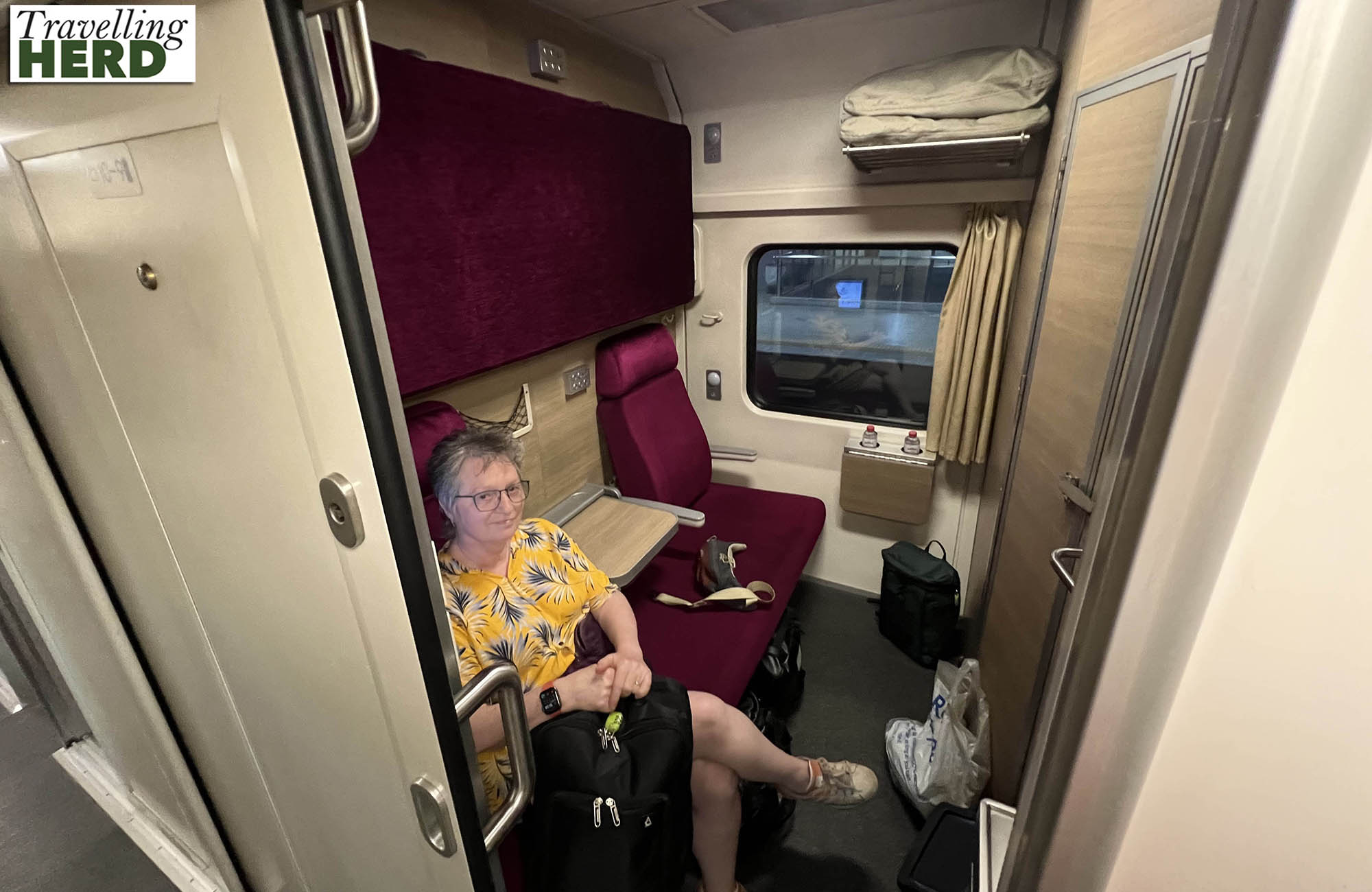
Alcohol is prohibited on board but we were offered a choice of two meals both of which came with pineapple, rice and clear soup. Robert opted for Thai green curry again but was disappointed while Matilda’s chicken teriyaki was tasty.
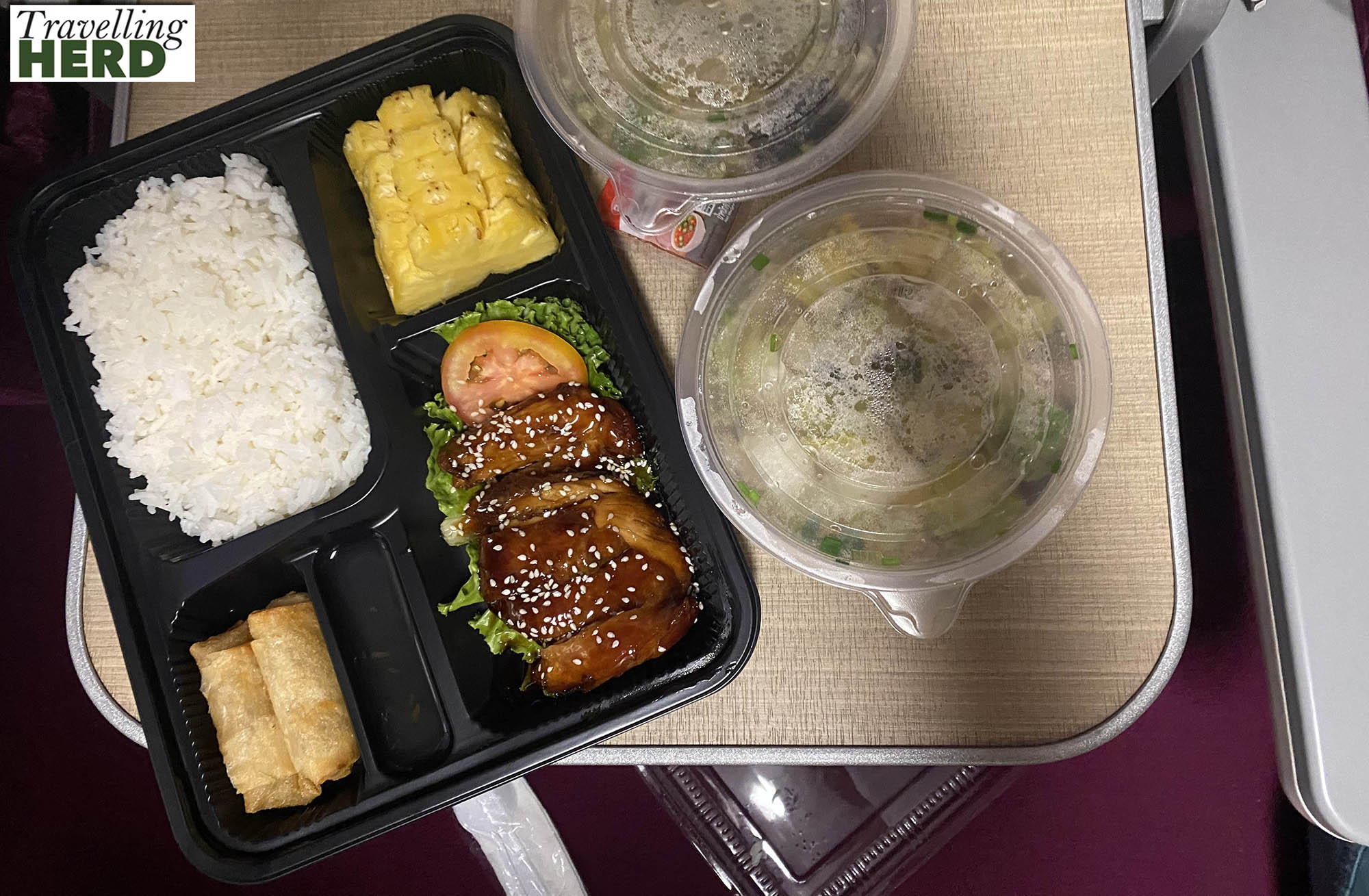
A sleeper train does not normally provide the best possible night’s sleep, but this was more restful than some. From Hat Yai we boarded a local commuter style train to Padang Besar on the border between Thailand and Malaysia. We knew we were on the right train.

As they moved the engine into position both Matilda and Robert took videos.
Matilda had not realised that the hooting and shouting were being directed at her.
The train had fans and windows which opened but no air conditioning.

At Padang Besar we had to go through immigration controls. As there are few trains, the same desks and immigration officers handle people moving in both directions. Officials ensured the passengers disembarking from the train formed a queue along the platform and we waited until those wanting to board the service back to Bangkok had cleared the departure hall. We were then allowed to enter what had instantly become the arrivals hall.
Although there are immigration checks and our passports were stamped both for leaving Thailand and entering Malaysia, the border is not exactly a high security crossing [see below].
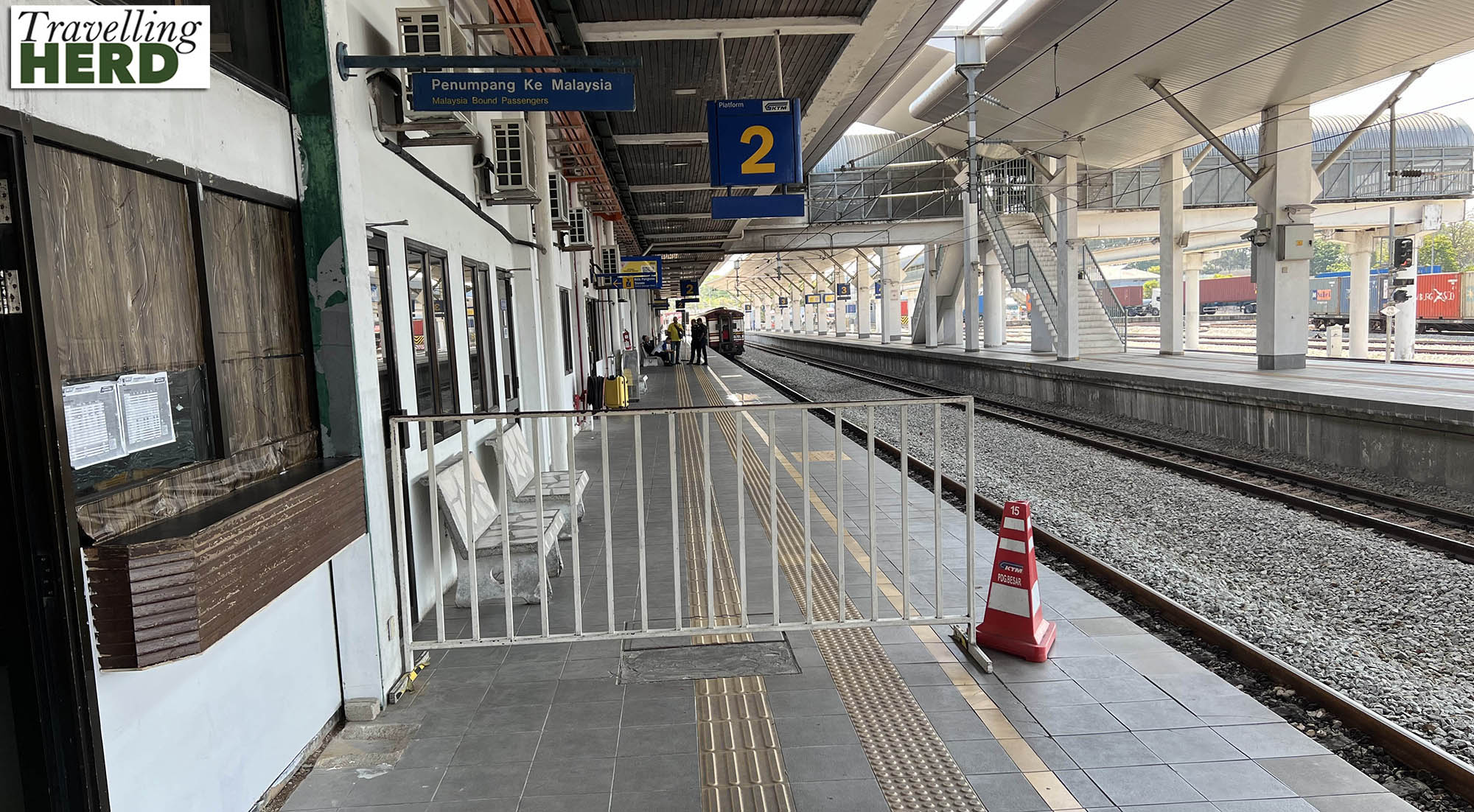
Just a little further up the platform, the other side of a moveable barrier and we found ourselves in another country.
The Malaysian train services run from Padang Besar to Butterworth Railway Station near the island of Penang on the West Coast of the Malay peninsula.

It is a little disconcerting that some of the place names sound so very British. Having reached Butterworth by train, the next stage of the journey was the ferry from Butterworth to George Town. The fare had to be paid by credit card and there were several people who had cash but no credit card who were trying to pay people in the queue to buy tickets on their behalf.
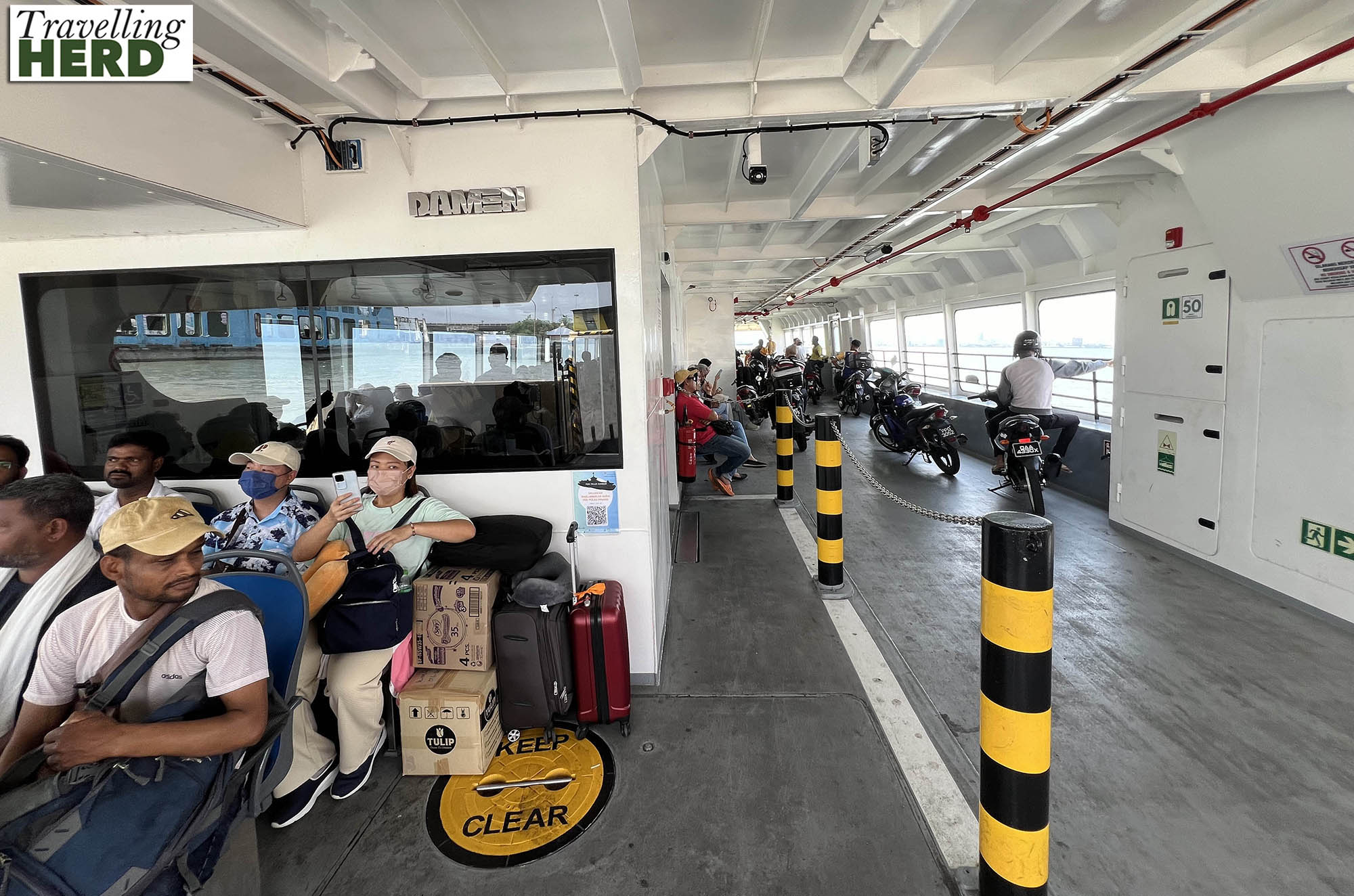
Penang is both the name of the state and the name of the island. The Penang state capital is George Town on Penang Island. In 1786 the British East India Company acquired Penang Island from the Sultanate of Kendal and developed it into a thriving free port.
Just three kilometres of water separates it from the mainland, so it is a short 20 minute crossing.
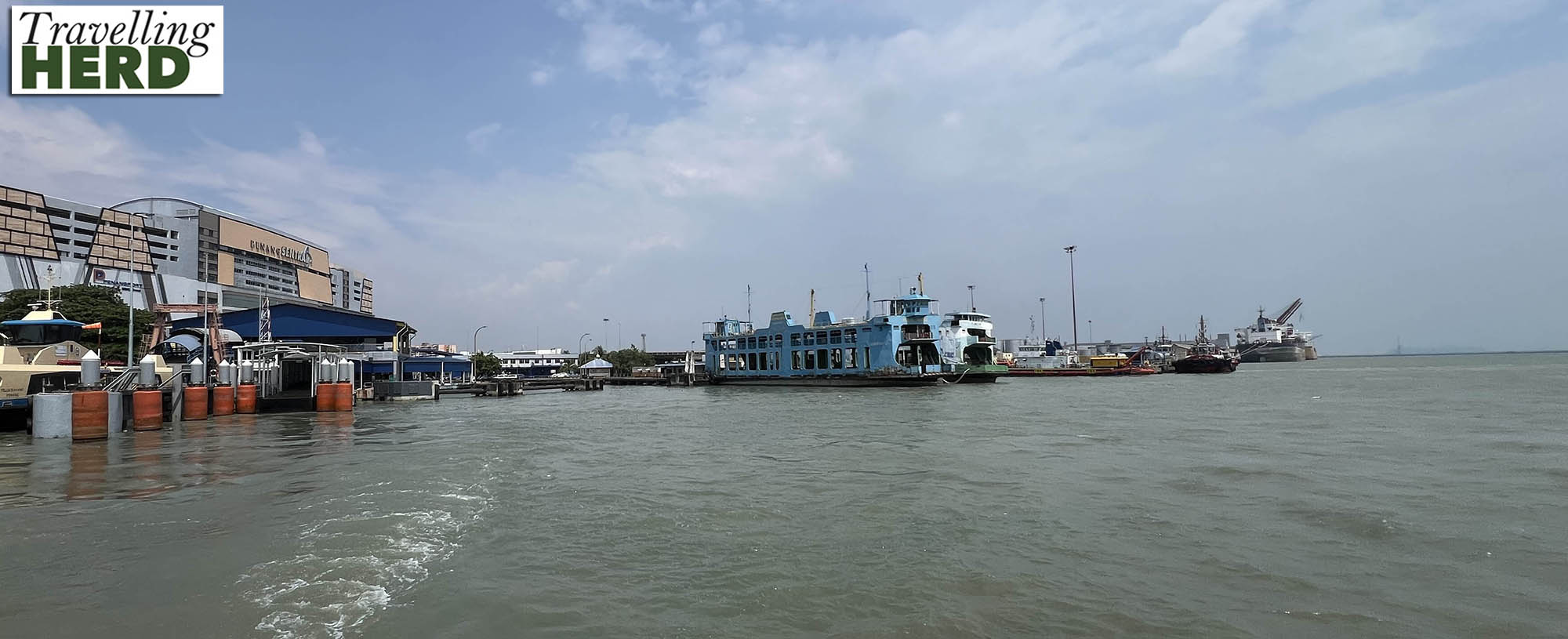
Robert was befriended in the queue by a sociable young man travelling with a group of friends. Later, as we disembarked, he found us again and asked for $10 so he may not have been quite as sociable as we thought.
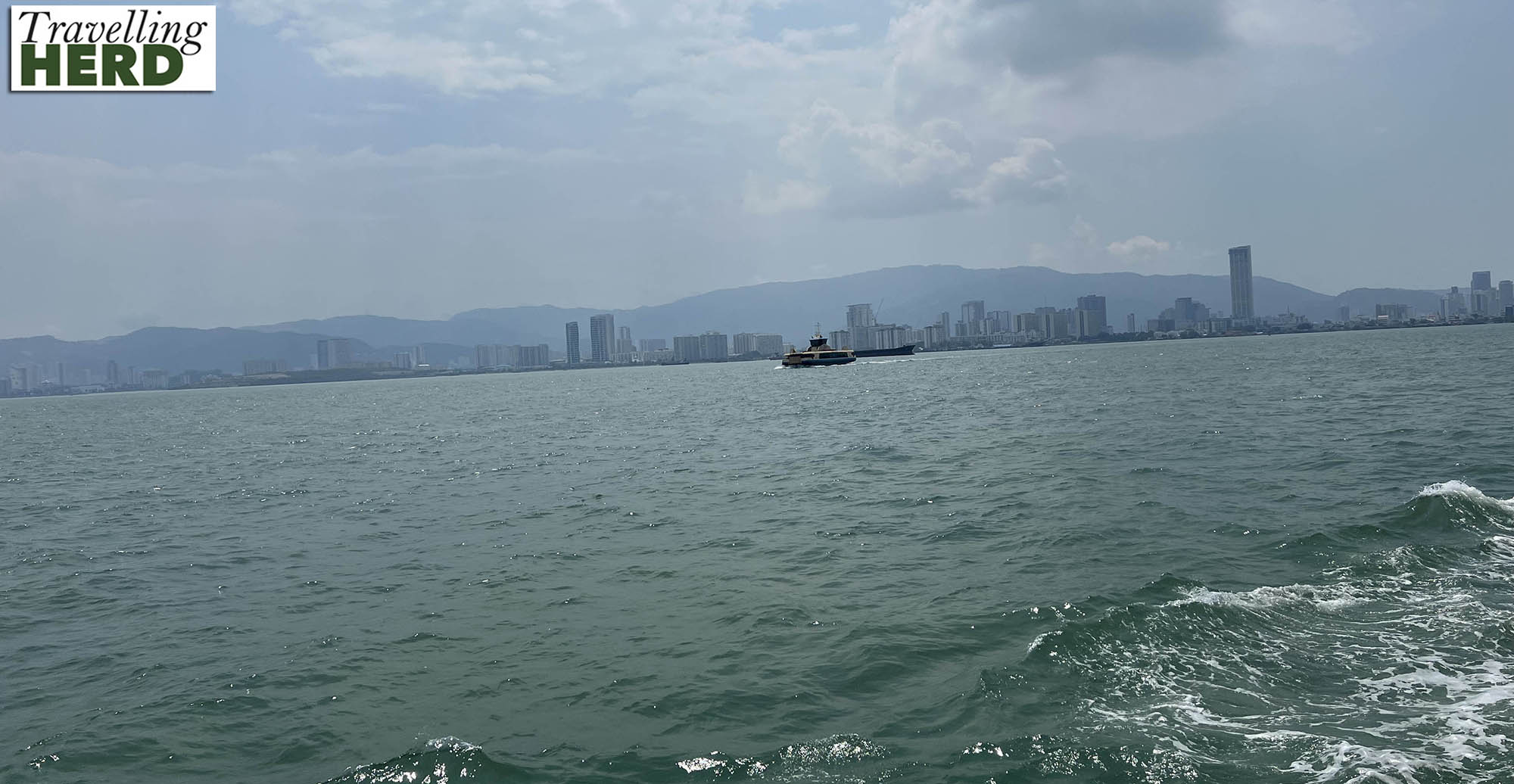
We ordered a Grab to the Modern Hotel which proved not to be a particularly accurate description as it did not have a lift, which is a god-send to all travellers with luggage. However, it is renowned for its indulgent baths. As well as a shower, we had an open balcony bathroom supplied complete with bubble bath, bath salts and a bath bomb. Matilda was determined to indulge. The hotel also had a jacuzzi on the roof, but it was in full sun for most of the day so we felt that it would be unwise to spend any time there.
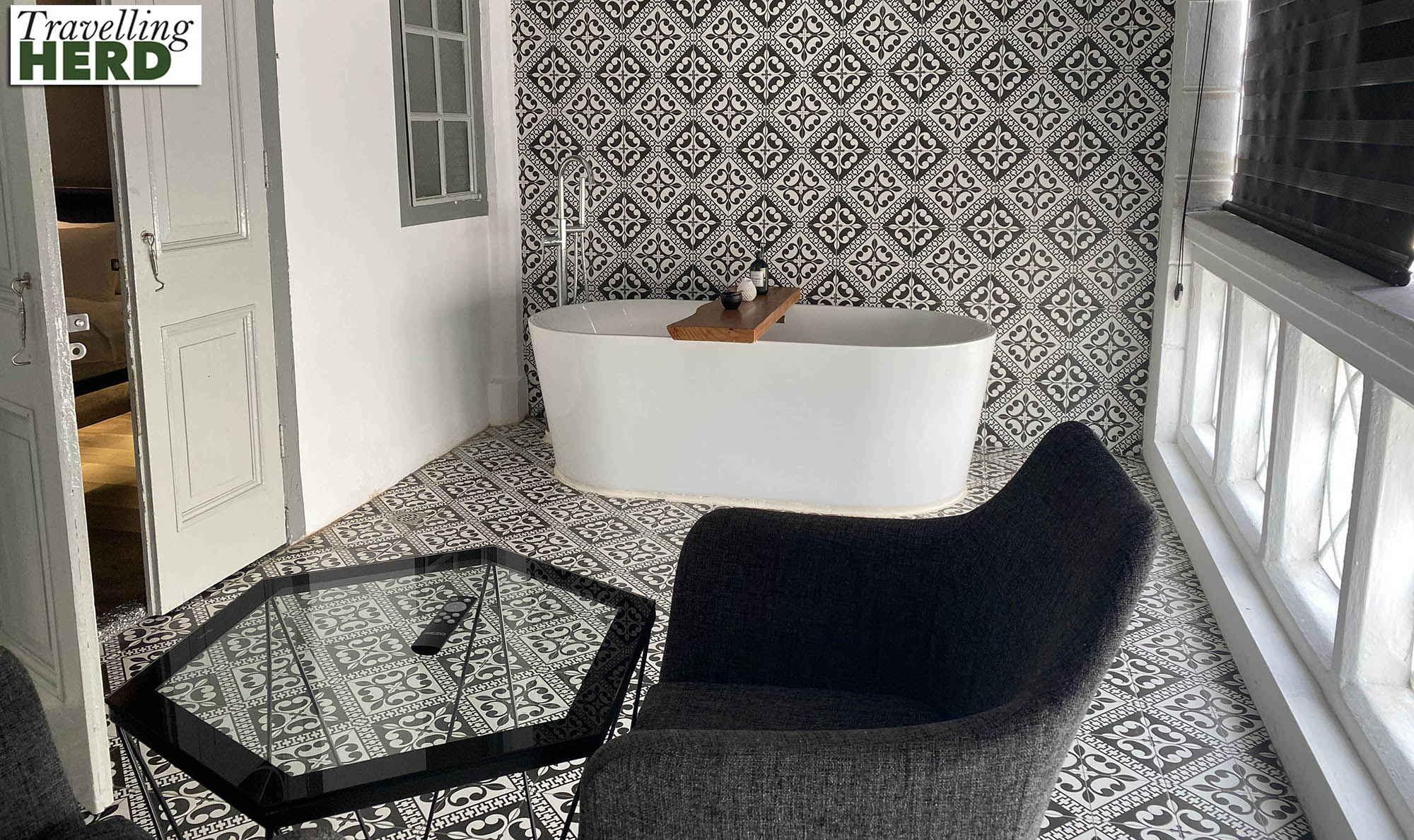
Walking out into George Town we found Chulia Street in Little India, one of the oldest roads in the city full of bars, restaurants and colourful neon.
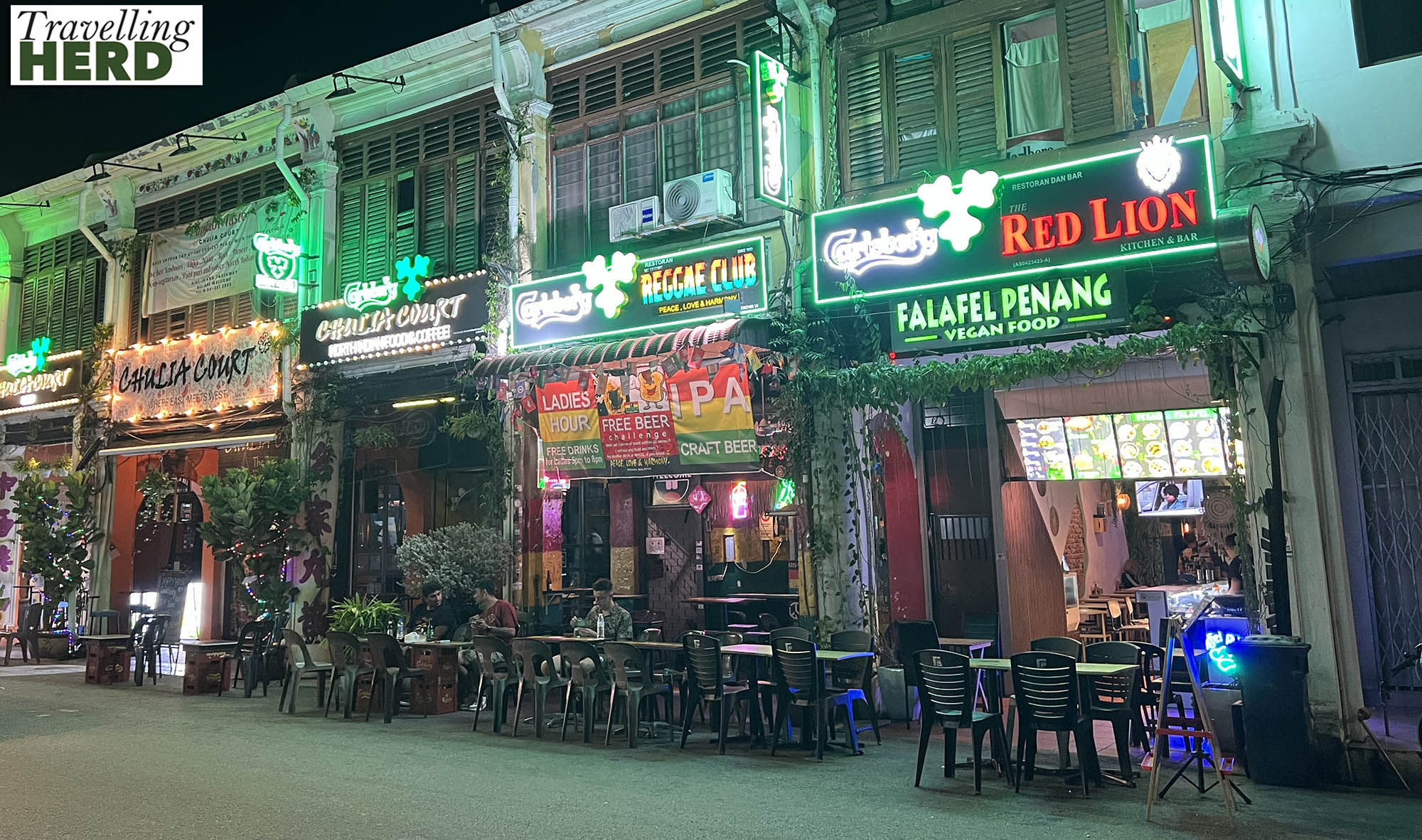
Having travelled for much of the day it was quite late when we went in search of a restaurant. We did not appreciate until we were inside, that we had chosen a Muslim restaurant during Ramadan, which began late on March 11 this year with the first fasting day being March 12.
The portions were unexpectedly large but would no doubt have been a welcome sight for those fasting during daylight hours [see Dish of the day]. The restaurant owner told Robert that we were their last customers before closing for the public holiday.
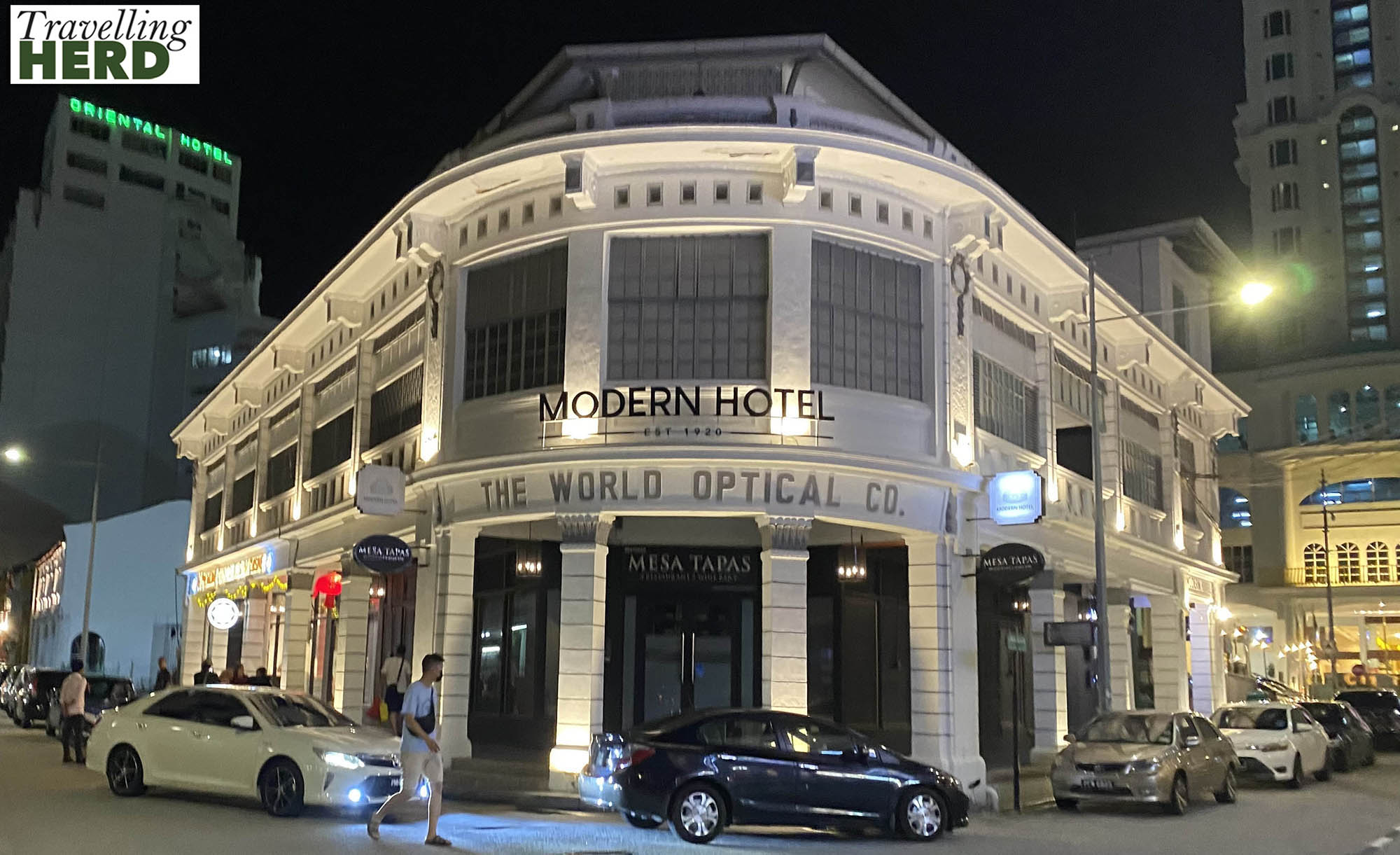
The Modern Hotel was attractively illuminated as we walked back to bed.
Video of the day:
Selfie of the day:

Dish of the day:
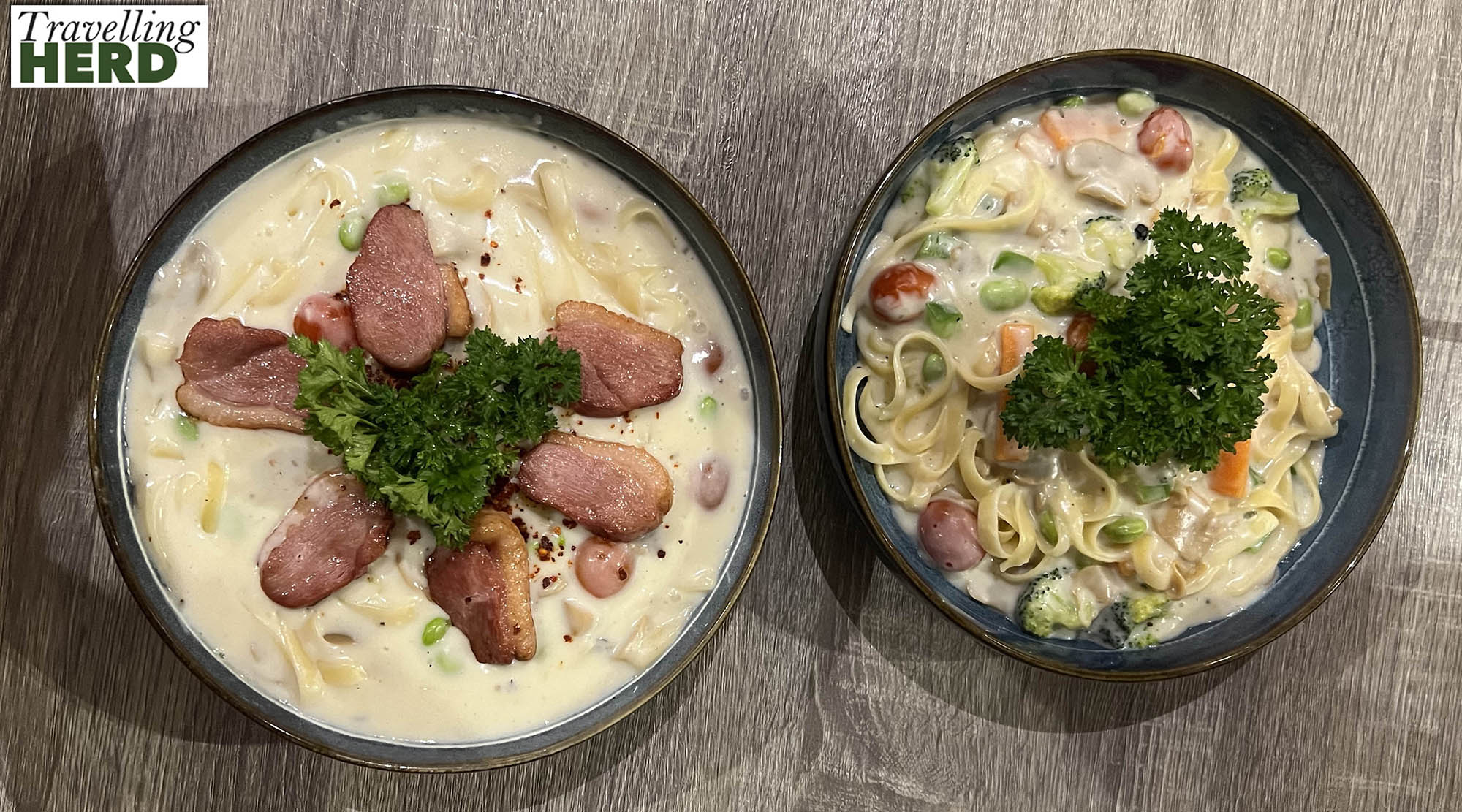
Route Map:
